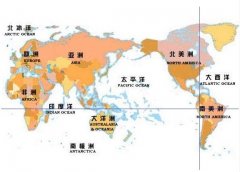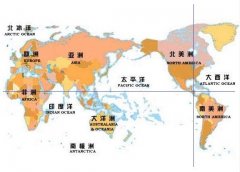Fine coffee learn the difference between new beans and old beans of raw coffee
After dry and wet processing, coffee fruit becomes coffee raw bean (Raw bean/Green bean).
The main ingredients of raw beans are: carbohydrates, about 49%
Moisture, about 12%
Protein. About 11%
Chlorogenic acid, about 7.6%
Alkaloids and trace elements, about 0.4%.
According to the length of time, raw beans can be divided into: seasonal beans (Current Crop), that is, raw beans that have just been harvested; new beans (New Crop), that is, raw beans of the first year; old beans (Past Crop), that is, raw beans that have been stored for two years; and old beans (Old Crop), that is, raw beans that have been in stock for too long. Aged beans (Aged Bean), unlike old beans, are stored in a unique way: wrapped in endocarp, stored in a high and cool warehouse of origin, and often turned over. After baking, the acid quality of the old bean flavor becomes weaker, the mellowness becomes higher, the texture becomes thicker, and the old bean can be integrated with the new bean to balance the acid quality. In addition, the aged beans after baking should be placed for 3 days after extraction and drinking, so that their thick flavor can be displayed.
In addition, compared with the old bean, the new bean is difficult to bake because of its high water content and difficult heat transfer. After baking, the new beans feel lively, with natural flower aroma, high-quality sour taste, high water content, rich chlorogenic acid, relatively bright and strong taste; old beans feel calm, mellow and thick, low water content, slightly expanded volume, soft taste.
With the growth of time, the internal moisture of raw beans gradually decreases, the color of raw beans will gradually change from dark green to blue to white and yellow; the smell of fresh fruit or grass will also gradually weaken; vitality will decrease. All these can be used as the basis to distinguish the freshness of raw beans.
Important Notice :
前街咖啡 FrontStreet Coffee has moved to new addredd:
FrontStreet Coffee Address: 315,Donghua East Road,GuangZhou
Tel:020 38364473
- Prev

World boutique coffee beans Peruvian organic coffee
Peru: organic coffee flavor and taste characteristics: high quality and balanced, palatable acidity, can be used for mixed drinks. Peruvian coffee cultivation history is not long, but as a rising star, Peruvian coffee is gradually opening up its popularity and entering the international market. Peru is located in western South America, with a coastline of 2254 kilometers. The Andes runs from north to south, and the mountains account for 1% of the total area of the country, which belongs to tropical sand.
- Next

World boutique coffee producing area Honduras specially selected Highland Coffee
Honduras: special highland coffee flavor and taste characteristics: good flavor, rich and mellow, suitable for mixed drinking. Honduras is located in the north of Central America, facing the Caribbean Sea to the north, the Gulf of Fonseca in the Pacific Ocean to the south, Nicaragua and El Salvador to the east and south, and Guatemala to the west, mostly mountains and plateaus. It has a tropical climate, mild temperature, abundant rainfall, and is a coffee producer.
Related
- Beginners will see the "Coffee pull flower" guide!
- What is the difference between ice blog purified milk and ordinary milk coffee?
- Why is the Philippines the largest producer of crops in Liberia?
- For coffee extraction, should the fine powder be retained?
- How does extracted espresso fill pressed powder? How much strength does it take to press the powder?
- How to make jasmine cold extract coffee? Is the jasmine + latte good?
- Will this little toy really make the coffee taste better? How does Lily Drip affect coffee extraction?
- Will the action of slapping the filter cup also affect coffee extraction?
- What's the difference between powder-to-water ratio and powder-to-liquid ratio?
- What is the Ethiopian local species? What does it have to do with Heirloom native species?

